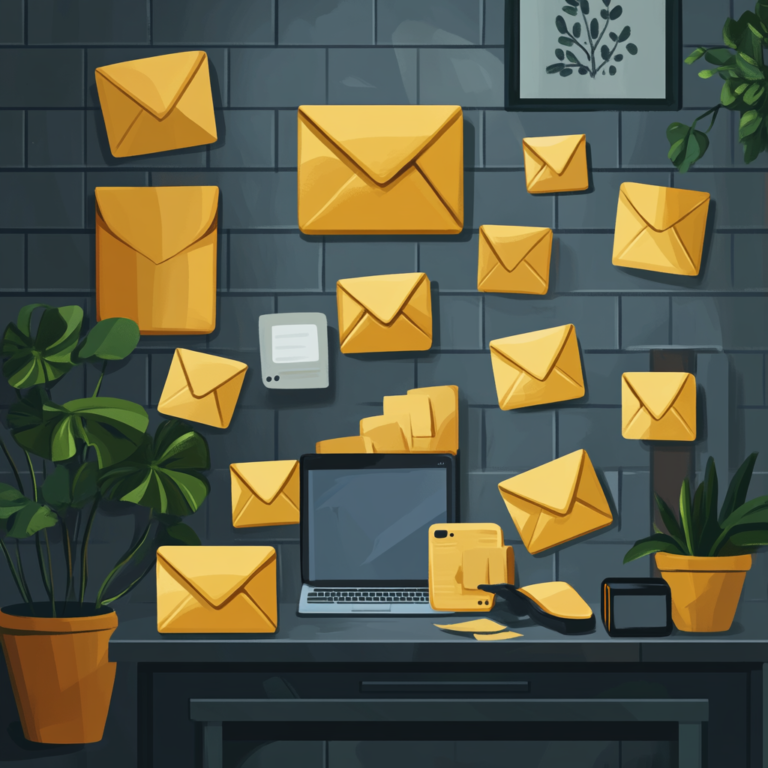Shopping from your couch has never been easier. Our wallets have gone digital, as have the sneaky folks looking to swipe your information. While hitting “Add to Cart” feels convenient, keeping what belongs to you safe is equally important. With e-commerce predicted to hit over $8 trillion by 2026 (US Cybersecurity Magazine), keeping our online shopping secure isn’t just a suggestion; it’s a must.
When browsing for deals, you’re often dishing out personal intel, like credit card numbers and home addresses. So, it’s wise to arm yourself with smart security habits. This helps fend off internet baddies trying to breach data, pull phishing stunts, or nab identities (Kaspersky). Here, I’ll guide you through top-notch online shopping security tips to ensure your e-commerce spree is as secure as it is enjoyable.
To further sharpen your security game, dive into more goodies like Cybersecurity for Beginners, learn about crafting strong passwords, and get savvy about spotting phishing emails.
Verify Website Security and Legitimacy
It’s a must to keep my data safe while shopping online, right? Here’s how I avoid digital baddies and ensure I buy from a legit site.
Check for HTTPS and Padlock Symbols in the URL Bar
First stop, the URL bar. If I don’t see “HTTPS” at the start, I’m outta there. This fancy little acronym means the site’s got encryption mojo, keeping all the stuff I type safe from prying eyes. And yeah, if it’s just “HTTP”—no ‘S’—then I know it’s a bit of a shaky zone.

| URL Starts With | Security |
|---|---|
| HTTP | Not Secure |
| HTTPS | Secure |
Look for Trust Seals and Security Certificates

Next, I hunt down those trust badges—icons from brands like Norton or McAfee—they’re like the site’s security bouncers. When I spot them, usually in the corners or on the checkout page, it’s like a mini pat on the back telling me I’m good to go.
Research Merchant Reviews and Ratings
Before handing over any cash, I scroll through customer reviews and ratings. Platforms like Trustpilot, BBB, or Google Reviews offer the real-deal scoop on who’s selling what. This keeps me from buying from some shady internet corner and points me toward the good folks.
Verify Physical Address and Contact Information
Real sellers shout out their contact info—phone numbers, addresses, etc. A quick search engine check to confirm these details also gives me confidence. If I can’t find their HQ, or it’s pretending to be somewhere I know doesn’t add up, I’m raising an eyebrow.
Examine Website Domain Name for Suspicious Variations
Before I click that buy button, I give the site address a good look. Scammers love pulling fast ones with almost-right domain names. Spotting a typo might spare me from getting duped.
Sticking to these steps keeps my online buying spree happy and safe.
Create Strong Account Protection
Keeping your info safe while shopping online isn’t just a good idea—it’s necessary. Think of it like your own little moat around your digital castle, with drawbridges like killer passwords, double-checking who’s knocking at the door, and watching over your stuff like a hawk.
Use Unique, Complex Passwords for Each Shopping Site
Don’t reuse passwords like yesterday’s socks; each site you shop on deserves its combo lock. A solid password is a mix of capital letters, lowercase letters, numbers, and some funky symbols. Need a hand with that? Check out our tips on how to create a strong password.
| Character Type | Examples |
|---|---|
| Uppercase | Z, X, Y |
| Lowercase | w, x, y |
| Numbers | 4, 5, 6 |
| Special Characters | $, %, ^ |
Enable Two-Factor Authentication When Available
Two-factor authentication (or 2FA if you’re in a hurry) is your electronic guard dog. It asks for a second proof, like a code texted to you, before letting anyone in. Even if someone nabs your password, they won’t get past without this. Get the scoop on 2FA in our what is 2fa article.
Avoid Saving Credit Card Information Online
I know, it’s easy to hit “Save.” But guess what? It’s also easier for hackers to waltz right in. Type it out every time, or trust a virtual credit card to do the heavy lifting.
Set Up Purchase Alerts and Notifications
Stay in the know with alerts and notifications that shout out as soon as someone tries to mess with your cash flow. Apps hook you up with these features letting you play detective and nab any shady stuff right away (NerdWallet).
Regularly Monitor Account Activity
Be your own security guard. Regular check-ins with your account statements can catch glitches before they grow into problems. Get cozy with Signs of Computer Hacks to stop creeps in their tracks.
By following these tips, you can slap down fraudsters and keep control of your online world. Want more ways to beef up your security? Dive into our guides on Securing your Web Browser and home network setup.
Choose Secure Payment Methods
When I’m shopping online, I know the secret sauce: choosing secure payment methods. It’s almost like choosing sturdy armor to guard my cash and data. So, let me break down some online shopping security tips that’ll save you a headache and some green.
Compare Different Payment Gateway Options
Now, payment gateways are our buddies in the payment process, ensuring transactions happen smoothly and safely. They jazz up security using tricks like SSL and TLS, like talking in a cool secret code that no one’s cracking anytime soon. And hey, there’s tokenization too, swapping out your sensitive info for tokens—think of it as the ultimate balm against data breaches.
| Feature | SSL/TLS Encryption | Tokenization |
|---|---|---|
| Function | Encrypts sensitive data | Replaces data with tokens |
| Risk Reduction | Prevents data interception | Minimizes data exposure |
| Example Payment Gateways | PayPal, Stripe, Square | Authorize.Net, Braintree |
Understand Credit Card vs. Debit Card Protection
Between credit and debit cards, it’s a no-brainer—credit cards steal the spotlight for safety. They know how to wrap us in a cozy protective layer:
- Encryption: Like secret safes for your info in cyberspace.
- Fraud Monitoring: Sees fishy stuff before it’s a disaster.
- Zero Fraud Liability: Oh no! Someone went shopping with your card? You’re off the hook.
- Legal Protection: The FCBA’s got your back for up to $50 max if your card’s info takes a stroll without permission.
Debit cards? They love screen time too much with your bank account. And getting back wrong charges? Yeah, good luck speeding that up.
Learn About Virtual Credit Cards and Their Benefits
Virtual credit cards—like having a getaway car for buying sprees. Linked to your real card, but using a fresh number each time you buy, fraud showers you with zero love.
What’s in the benefits bag:
- Enhanced Security: Like temp tattoos—show off the flair, then wash it off.
- Control: You call the shots on how much moolah can dance out and when each virtual card says goodbye.
- Anonymity: Your real card number? Shadow in the mist.
Evaluate Digital Wallet Security Features
Digital wallets like PayPal, Google Pay, Apple Pay, and Facebook Pay are top-secret security suites for online payments. Here’s what they’re packing:
- Multi-Factor Authentication: Adds a backup bouncer at the door—nobody’s getting in without proper ID.
- Notifications: Like a little birdie whispering what’s happening with your money, live.
- Biometric Authentication: Your face or fingers are the ultimate locks.
- Tokenization: They only remember the good stuff while keeping your info in disguise.
For more information on securing digital payments, take a peek at our guide on how to secure cryptocurrency.
Consider Payment Protection Policies
Different strokes for different protection folks. Here’s the lineup:
- Credit Card Protection: Stars of chargeback showdowns if stuff goes sideways.
- Third-Party Payment Systems: PayPal and its pals can refund your cash if your order takes a detour.
- Store Policies: Some shops have a safety net for your buys.
For information on hacking (not literally) your account protection, read our article on how to create strong passwords and what 2fa is.
I’ve found that keeping savvy about payment strategies is like having a shield and sword when I shop online. Trust me, it’s a game-changer for peace of mind.
Protect Your Personal Information
Shopping online is convenient, but it’s also key to keeping your personal information private. Here are some nifty tips to help you protect your sensitive data while shopping online.
Minimize Data Shared During Checkout
When it comes time to cough up info at checkout, stick to the necessities; nobody needs your grandma’s maiden name or your old dorm room address. The rule of thumb: the less info you drop, the less likely someone shady will pick it up. Always double-check why they’re asking for what they’re asking.
Use Guest Checkout When Possible
Guest checkout? Oh, that’s your best friend. It cuts down on the personal info that some sites want to squirrel away about you. Sure, you might have to re-enter your details next time, but better that than dealing with a data love letter some hacker wrote you.
Create a Separate Email for Shopping
Got a spare email? Use it for shopping. It’s your front line against spam and those sketchy emails trying to make you click on things you shouldn’t. Trust me, managing all those sales pitches is easier, and your main inbox will thank you.
Be Cautious with Personal Detail Requests
If a website starts getting nosy, like asking for your first pet’s name, tread carefully. No legit shopping site needs your high school mascot or the color of your first car. Think about it—would you share this info at a party? Keep an eye out for the sketchy ones wanting too much.
Understand Data Privacy Policies
Before you hit that “buy” button, glance at the site’s data policies. These little write-ups will tell you how they plan to keep your info safe—or not. Knowing your rights gives you some ammo for protecting yourself or peace of mind. If you’re more into data safety, you might want to know how to secure cloud storage.
Keeping these practices close can help make your online spending spree safer. Shopping shouldn’t be a heavy-breathing affair; safeguard your details, and you’ll cruise through the online aisles with ease.
Secure Your Shopping Device
Alright, let’s talk business about keeping your gadgets safe when you’re on a spree online. No one wants their shopping buzz killed by cyber crooks. Here’s how to stay steps ahead of the baddies and keep your digital buys locked down.
Keep Operating Systems and Browsers Updated
You know how your phone or computer keeps nagging about updates? Just do it. Those updates aren’t just there to annoy you until you click “install later.” They’re fixing holes in your device’s armor and maxing out security levels. Plus, you get all the cool new security features to fend off online nasties.
Install Reputable Antivirus Software
Think of antivirus software as your device’s bouncer. It scans for sketchy stuff, like viruses and spyware, and throws them out on their ear. There’s a heap of solid choices, and I’ve spilled the tea on some favorites over at Best Antivirus Software. Keep that bad boy updated and scan your device regularly to keep cyber attackers at bay.
Use Secure Wi-Fi Networks Only
Wi-Fi isn’t always your friend, especially if you’re on public networks. It’s like leaving your front door open while you nap. Stick to your own Wi-Fi or use a mobile hotspot you trust. And for the extra cautious among us, a VPN wraps your data in an impenetrable cloak of invisibility. Need more on this? Check out how to use public wifi safely.
Enable Firewall Protection
Imagine firewalls as your device’s security team, monitoring everything trying to get in or out. Most gadgets come with this built-in, so flick ’em on. They’re sneaky protectors, blocking dodgy connections before they can do any harm. Got a hankering for more advanced firewall wizardry? Here’s where to go: secure home network setup.
Clear Browsing Data Regularly
Clear out those digital crumbs! Regularly cleaning up your browsing history, cookies, and cached files can prevent snoopers from accessing your information. Plus, it keeps your device running smoothly and quickly. For a cleanup tutorial, check out How to Secure Browser.
Data Security Measures
| Measure | Explanation |
|---|---|
| Updates | Keep your OS and browsers fresh (source) |
| Antivirus | Set up first-rate antivirus protection (source) |
| Wi-Fi | Stick to secure networks and VPNs (source) |
| Firewall | Use built-in or spicy firewall options (source) |
| Browsing Data | Dust off those digital tracks frequently (source) |
With all these steps in your toolkit, online shopping can be as fun and safe as it should be. Want to dive deeper into cybersecurity? I’ve got you covered at Cybersecurity for Beginners: Complete Guide to Online Safety.
Recognize Common Shopping Scams
Online shopping offers convenience but can also be a breeding ground for scams. Knowing how to spot these scams keeps your personal and financial information safe.
Identify Suspicious Deals and Offers
Be wary if a deal looks like it fell straight from the heavens. Sweet discounts can be a scammer’s bait to extract personal and financial data. Here’s how not to bite:
- Approach deals drastically below the market price with caution.
- Check prices across several trustworthy sites.
- Examine customer reviews and ratings, but remember, some may be as fake as monopoly money (Source: US Cybersecurity Magazine).
Spot Fake Shopping Websites
Scammers create websites that look just like the real deal to snag your sensitive info. Spot the fakes by:
- Check for URLs beginning with HTTPS instead of HTTP (Source: Kaspersky).
- Looking for trust seals and ensure their validity by clicking on them.
- Confirm the presence of a physical address and contact details (Source: Kaspersky).
Avoid Phishing Emails and SMS
Phishing emails and SMS will try to convince you they’re from a trusted source. Don’t fall for the act:
- Check the sender’s email for anything fishy.
- Ignore links or attachments from unknown sources.
- Reach out to the company directly to confirm the message.
Diving deeper into this? Peek at our guide on how to identify phishing emails for more know-how.
Understand Social Media Shopping Risks
Scammers pry in social media waters too, setting traps with flashy ads and counterfeit storefronts. To steer clear:
- Investigate the seller and look for reviews and credible ratings.
- Be skeptical of sellers missing an online footprint.
- Ignore unverified ads or links that seem shady.
Curious about tweaking your privacy settings? Here’s our guide on social media privacy settings.
Learn About Seasonal Scam Patterns
Scammers love the holiday rush, targeting Black Friday and Christmas. During these busy times:
- Scrutinize deals and offers as they beckon.
- Dig into research before buying.
- Opt for secure payment options to dodge fraud.
For more on shielding yourself online, check out our Cybersecurity for Beginners: a Complete Guide to Online Safety.
By recognizing these shopping traps, you can guard your personal and financial well-being and enjoy the perks of online shopping without the headaches.
Conclusion
Shopping online is super convenient, but you’ve got to keep your privacy and security in check, right? Following the security tricks I’ve shared can reduce the risks of buying stuff online.
First, check if websites are the real deal. Always look for HTTPS and that padlock symbol in the URL bar. You don’t want surprises! It’s wise to dig into merchant reviews, make sure physical addresses match up, and double-check domain names for any fishy stuff.
Want to keep your account safe? Choose passwords that aren’t easy peasy lemon squeezy. Think unique and tough for each site! For extra safety, add two-factor authentication (learn about 2FA). It’s also a good idea not to store your credit card info online, get alerts for purchases, and keep an eye on what’s happening with your accounts.
Picking the right way to pay is important, too. Compare payment gateways and learn the ins and outs of credit cards vs. debit cards. Virtual credit cards are worth considering for their benefits. Snoop around digital wallet security and review payment protection terms before making up your mind.
Don’t give away more info than needed. Keep it minimal! Use guest checkout if it’s there, get a special email just for shopping (email security tips), stay skeptical about too personal inquiries, and be smarty pants with data privacy policies.
Make sure your shopping gear is in tip-top shape. Update your systems and browsers and get trusted antivirus software (best antivirus software). Only use safe WiFi (public WiFi safety tips), turn on your firewall, and tidy up your browsing history.
Keeping an eye out for scams can save some headaches. Catch dodgy deals and avoid fake websites. Don’t fall for phishing emails and SMS (learn to spot ’em). Watch for the shady stuff on social media (social media privacy settings), and know those scams that seem to roll around every season.
Hang on to these online shopping safety tips and shop confidently. It’s all about knowing what’s what, keeping yourself in the loop, and taking those extra steps to fend off the cyber baddies. Stay sharp and stay safe!



